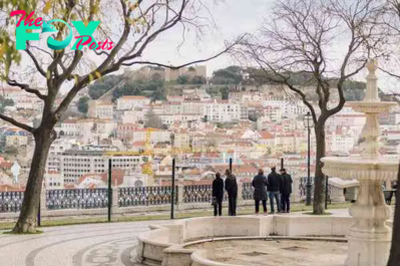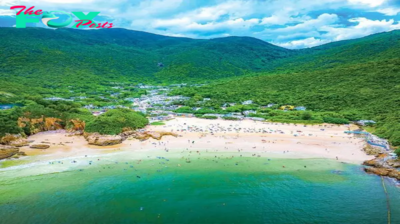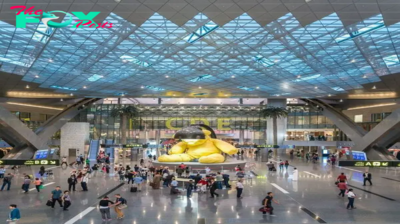Travel
Regal Residences: 6 Palaces Turned Luxury Hotels
Are humble origins preventing you from being treated like the prince or princess you are? Fret not, because a stay at one of these luxurious properties will fulfil all your fantasies of belonging to an ancient ruling house.
In the past, belonging to a monarchical dynasty was often romanticised. Granted, the lifestyle generally brought with it power, opulence, balls, feasts and glamour, but at the same time, the princes, princesses, grand dukes and countesses were always more prone to kidnappings, house arrests and coups. Now, however, as the world is more open than ever, discerning sybarites can try on the lifestyles of emperors, kings, maharajas and sultans without having to worry about being overthrown by an angry mob storming their palace.
ÇIRAĞAN PALACE KEMPINSKY, TURKEY

Once a lavish abode for Ottoman sultans, the Çirağan Palace now stands as a testament to both Turkish heritage and modern luxury, with a captivating History even more enthralling than the intricate carvings on its columns or the vibrant stucco in its hallways. Commissioned by Sultan Ahmed I in the 17th century, the palace’s Imperial Garden (hasbahçe) was relocated to the Bosporus 100 years later, where it became home to three iNFLuential sultans during the 19th century. Although ravaged by fire in the early 1900s, it was resurrected by a Japanese company and now houses 11 opulent suites for the Kempinski hotel, as well as a pair of restaurants.

The suites expertly blend modern and classic elements, with each navy-blue room featuring headboards adorned with floral motifs, a nod to the building’s rich past that dates back to the tulip period, while coffered ceilings boast intricately woven geometric patterns and the carPets mimic the traditional straw designs used to combat the humidity of the strait outside. As for the elegant seating, it’s inspirated by the ancient Turkish art of marbling, also known as ebru.
AMAN AT THE SUMMER PALACE, CHINA

In Beijing’s sprawling outskirts lies a grand estate that was once a convenient summertime escape for members of Qing ruling clan. The Summer Palace boasts 290 hectares of lush gardens and serene lakes, with the 61-metre-high Longevity Hill towering above them all and the three- storey Tower of Buddhist Incense standing atop a hill. Although this grandiose Unesco World Heritage Site beckons with the glamour and allure of ancient China, and today swarms with visitors tourists, there’s also a hidden passage exclusively for the use of guests staying at the ultra-exclusive Aman at the Summer Palace, which lies just minutes away from the East Gate.

Rather than mere rooms, the accommodations at the Summer Palace are in grandiose pavilions that once served as quarters for the guests of Empress Dowager Cixi herself. Within these stunning structures, whose walls surround a charming secluded courtyard, there’s a lavish bedroom, spacious living quarters and an intimate space that can accommodate up to 14 diners. While the Imperial Suite boasts its own private spa, the hotel also features a vast two-level underground spa, where indulgent treatments are inspired by Imperial and Chinese techniques.
ASHFORD CASTLE, IRELAND

In 1228, the formidable Ashford Castle was erected by the Anglo-Norman de Burgo family, who’d established their dominance over the region after conquering the native O’Connors of Connaught. Centuries passed, but the castle remained in the de Burgos’ hands until it was seized by Sir Richard Bingham, Lord President of Connaught, who added further fortifications to the structure. Later still, under the Browne family, a large estate and magnificent French-style chateau were added – and once Sir Benjamin Lee Guinness acquired Ashford Castle, he spared no expense in burnishing its glory.

Now covering more than 140 hectares, new roads were built on the estate, thousands of trees were planted and two Victorian-style extensions were constructed. In 1951, the castle served as the location for the John Ford comedy The Quiet Man, starring John Wayne and Maureen O’Hara. Now a hotel, Ashford’s air of timeless elegance is reminiscent of the golden era, with a majestic cinema, a billiards room with opulent furnishings and a cigar lounge. Fusing Victorian tradition with every modern amenity, it’s a glowing symbol of warm hospitality, extravagant luxury and rich history.
COPACABANA PALACE, BRAZIL

Although this jewel in Brazil’s second city never formally served as a residence for the political elite, its History brims with opulence and glamour, with a long list of guests that includes Walt Disney, Princess Diana, Madonna, Marlene Dietrich, Brigitte Bardot, Jayne Mansfield, Nat King Cole, Sammy Davis Jr, Ella Fitzgerald and Edith Piaf. The grand Copacabana Palace, affectionately known as the “Copa”, was designed by the French architect Joseph Gire, in celebration of Brazil’s 100th anniversary of independence. While giving a nod to the art deco structures of the French Riviera, Gire added touches of local Carioca charm, with no expense spared in creating this masterpiece. More than 1,000 staff members tended the hotel’s 230 rooms, a staff-to-guest ratio unmatched by any other establishment at the time.

It was here that the “Atlantic Hotel” came to life on the silver screen in RKO’s 1933 movie Flying Down to Rio, starring Fred Astaire and Ginger Rogers. The true embodiment of the spirit of an era, the Copacabana Palace continues to captivate its guests, whether inveterate jet-setters or starry- eyed dreamers.
SHANGRI LA PARIS, FRANCE

In spite of Napoléon’s Corsican origins, few things seem more French than the house of Bonaparte. Within the opulent walls of Prince Roland Bonaparte’s former residence in the city’s 16th arrondissement, and with views of the Eiffel Tower and River Seine, lies the epitome of Parisian sophistication: the Shangri-La Paris. A genuine palace that boasts Monument Historique recognition, this majestic hotel gracefully intertwines its elegant European regality with the gracious hospitality of the Orient, a marriage encapsulated in Shang Palace, the only Chinese restaurant in France to hold a Michelin star.

For the ultimate regal experience, choose l’Appartement Prince Bonaparte, a lavish one-bedroom suite in Directoire style whose soaring ceilings adorned with ornate crown moulding and gilded accents, as well as parquet floors, are reminiscent of Versailles, while fusing classic French 18th-century design with delicate Asian influences in its art and decor. Private balconies provide idyllic vistas of the City of Light, while the generously expansive living room and separate dining area can easily accommodate a party of eight. Just as lavish is the bedroom, which is decorated in a palette of blues and gold, with a majestic crystal chandelier as its focal point.
TAJ LAKE PALACE, INDIA

Built in 1743-1746 by Maharana Jagat Singh II, 62nd ruler of the House of Mewar, the majestic Jag Niwas served as the cherished summer hideaway for generations of the Mewar Royal family until 1963, when, in the reign of Maharana Bhagwat Singh, it was transformed into a lavish heritage hotel. Made entirely of marble, which was sourced from Rajnagar and transported on a gruelling 66km journey to Udaipur by bullock cart, this jewel-like palace is entirely surrounded by the tranquil waters of Lake Pichola. Blending Mughal and Mewari architectural styles, the hotel boasts 65 opulent rooms and 18 grand suites. Restored to its former glory, the magnificent pile gained international fame when it was featured in the James Bond film Octopussy as the secluded retreat of the titular Bond Girl.

Thanks to the hotel’s unique location, every room boasts stunning views of the neighbouring City Palace, and nearby Aravalli and Machla Magra hills – and this incomparable setting also provides the perfect backdrop for indulging in exquisite dining in the palace’s elegant, resident-only restaurants, from authentic Rajasthani fare at Neel Kamal to European delicacies at the seasonal open-air Bhairo. Should you wish to further indulge in this lavish royal Lifestyle, J Wellness Circle offers a range of treatments inspired by ancient Indian customs and the sophisticated way of life of India’s aristocracy.
-

 Travel12h ago
Travel12h agoA Beginner’s Guide to Kruger National Park: Discover the Big 5
-

 Travel2d ago
Travel2d ago9 Best Places to Live in Ohio, According to Local Real Estate Experts
-

 Travel2d ago
Travel2d ago28 Hidden Wonders of the World
-

 Travel6d ago
Travel6d ago9 Best Places to Live in Portugal, According to Local Real Estate Experts
-

 Travel1w ago
Travel1w agoThe 7 Best Food Markets in Cape Town: Diverse Flavors of The Mother City
-

 Travel1w ago
Travel1w agoAsian Street Food: Authentic Culinary Traditions and Best Eateries in the World
-

 Travel1w ago
Travel1w agoFrom Wine Tasting To Skiing, These Are The Best Things To Do In France
-

 Travel1w ago
Travel1w agoSchengen-Style Visa For Southeast Asia? Thailand Favours Joint Visa Across Six Nations



























